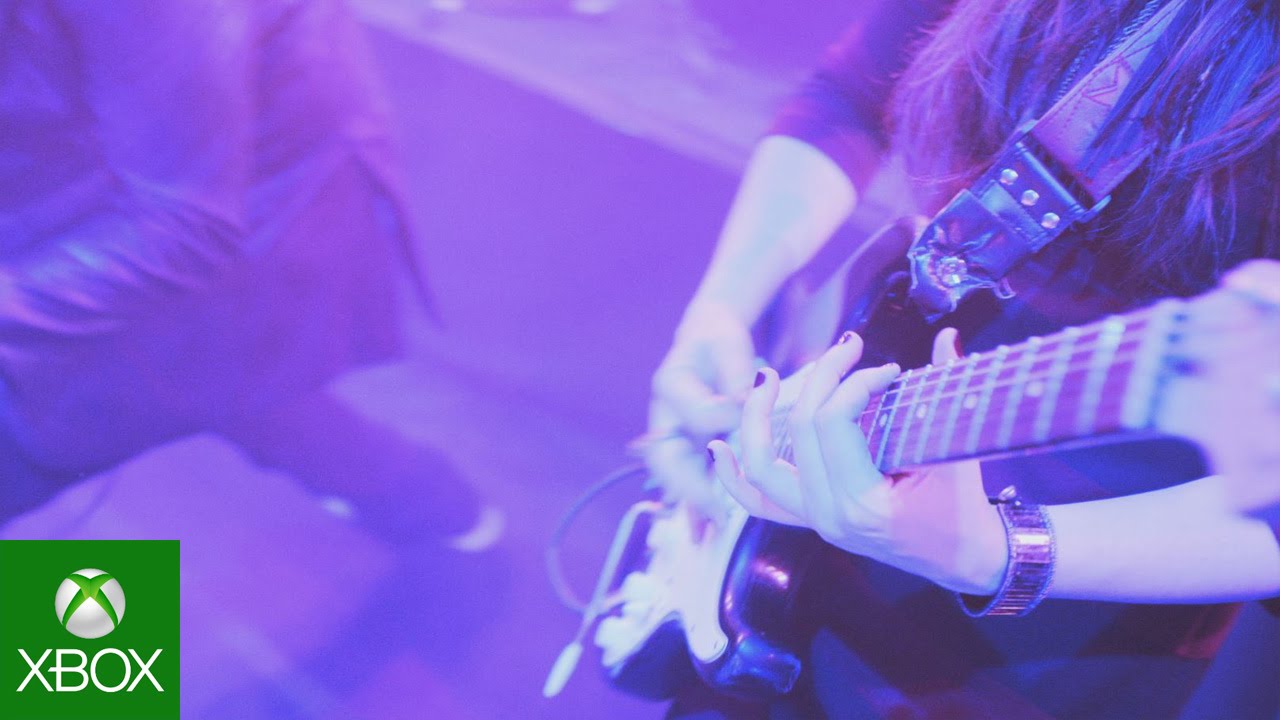
Rock Band 4 Teaches the Rhythm Game Genre Some New Tricks
It doesn’t take more than a passing glance at Rock Band 4 to recognize how it’s leveraging all those powerful horses beneath the Xbox One’s hood. From its impressive visual fidelity to its dynamic lighting and particle effects, it’s clear that developer Harmonix isn’t resting on its previous success with the popular rhythm game series.
Of course, as anyone who’s ever become a living room legend from behind a plastic guitar will tell you, slick visuals are just a small part of what fulfills the fantasy of making arena-rattling music with your friends. Thankfully, the game’s dazzling new paint job is just one of many enhancement that the ax-plucking property is receiving for its long-awaited return.
According to Product Manager Eric Pope – who was kind enough to sit down with us while a faux band enthusiastically played Pearl Jam’s “Even Flow” in the next room – Harmonix “really wanted to make a Rock Band experience that takes advantage of new-gen hardware and innovates the game in a meaningful way.”
This innovation will manifest itself most in Rock Band 4’s focus on player expression, a fresh initiative that combines the classic gameplay we love with a number of new features that promise to put us on the virtual stage like never before. For starters, a new “vocal freestyle” system will, according to Pope, allow singers to “mix things up and really make the songs their own.” While budding vocalists are still welcome to follow a tune as it was recorded, they can also add flourishes on-the-fly and still earn points; as long as they stay in key, they’re free to weave in their own personal style with the confidence of a rock icon.
Not to be outdone by their spotlight-hogging lead singers, guitarists will be able to similarly express themselves in the solo-enhancing “freestyle mode.” Pope said that Harmonix always wanted this feature in the franchise, but couldn’t implement into last-gen’s less-powerful hardware. The system finally lets fans live out their Eddie Van Halen fantasies by cranking out their own extended solos.
As Pope explained, this mode essentially lets you forgo a song’s authored solo section in favor of encouraging you to take center stage and showcase your rock god skills. Using all 10 buttons on the guitar, the mode allows players to get creative – and a bit crazy – by combining a variety of things, like lick-forming chord shapes, sustained notes, feedback, whammys, and finger-tapping. More than an opportunity to mash buttons mindlessly, though, the easy-to-learn and hard-to-master mode leaves room for more seasoned strummers to develop techniques and learn combinations for more refined performances.
While the ability to personalize vocals and guitar solos stick out as Rock Band 4’s biggest improvements, a number of other additions and enhancements also promise to bring down the house. New “dynamic drum fills,” which pick from a pool of dozens of song-appropriate options, fight latency issues and allow players to better keep the beat – while “Show” mode lets band members craft track lists and string series of songs together by voting on them.
“Quickplay” and “Tour” mode (which Pope teases as a “Rock Band RPG”) also return better than ever. And let’s not forget the music; on top of the revealed tracks (Fleetwood Mac’s “You Make Loving Fun,” The Who’s “The Seeker,” Jack White’s “Lazzaretto,” The Killers’ “Somebody Told Me,” and Spin Doctor’s “Little Miss Can’t Be Wrong”), Pope promises “dozens and dozens more.”
Rock Band 4 will also support all previously purchased Rock Band downloadable content and wireless plastic peripherals, although those who want to wield the game’s new ax will be treated to accelerometer tilt technology and quieter, more responsive buttons.
Whether you’ve been navigating the series’ note highways for years or you’re looking forward to taking the stage for the first time, Rock Band 4’s new-gen approach to the genre will be ready to make you a star when it returns to the road this fall.
